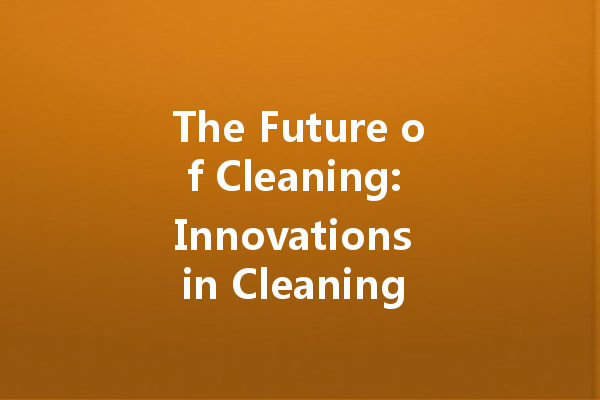Cleaning agents have come a long way, evolving through the decades to meet the demands of maintaining cleanliness in our homes, workplaces, and public spaces more effectively and sustainably. As we venture into an era more focused on health, safety, and environmental consciousness, innovations in cleaning agent manufacturing are pivotal in shaping the future of cleanliness. This article explores the revolutionary advancements in cleaning products, their impacts, and what we can expect in the coming years.
The Shift Towards Eco-Friendly Solutions
Growing Demand for Sustainable Products
As awareness regarding environmental issues rises, consumers are increasingly seeking eco-friendly cleaning solutions. Manufacturers are stepping up their game, creating cleaning agents that leverage natural ingredients, reduce chemical waste, and minimize their ecological footprint. The transition towards biodegradable and plant-based cleaning agents is not just a trend; it is becoming the industry standard.
Innovations in Packaging
Packaging plays a crucial role in the cleaning agent’s environmental impact. Innovative designs are now focusing on reducing plastic waste through the use of recyclable materials, refillable containers, and concentrated formulas that require less packaging overall. These advancements are appealing to environmentally conscious consumers who prefer to support brands that prioritize sustainability.
The Role of Technology in Enhancing Efficacy
Smart Cleaning Solutions
Incorporating advanced technology into cleaning agent formulations is another key innovation. Smart cleaning solutions utilize nanotechnology, which enables cleaning agents to act at a molecular level for more effective stain removal, disinfection, and surface protection. These breakthrough technologies ensure that cleaning agents not only fight against visible dirt but also reduce unseen pathogens, thus promoting a healthier environment.
Artificial Intelligence in Product Development
Artificial intelligence (AI) is increasingly utilized in the cleaning agent manufacturing process. AI can analyze consumer preferences, assess the effectiveness of various formulations, and streamline production processes. This leads to improved product development cycles and faster time-to-market for innovative cleaning solutions.
Understanding Ingredients and Transparency
Consumer Demand for Ingredient Knowledge
Modern consumers are more informed and concerned about the products they use. They want to know what goes into their cleaning agents and how those ingredients affect their health and the environment. Manufacturers are responding by providing transparent labeling and detailed information about the components used in their products, fostering trust and loyalty among consumers.
Focus on Non-Toxic Formulations

With the rise of health-conscious living, cleaning agent manufacturers are prioritizing non-toxic formulations. This shift eliminates harmful chemicals often found in traditional cleaning products and focuses on creating safer alternatives. As a result, consumers are empowered to maintain their living spaces without compromising on safety.
The Integration of Antibacterial and Antiviral Agents
Addressing Current Health Concerns
The COVID-19 pandemic has heightened the demand for effective disinfectants and cleaning products capable of combating viruses and bacteria. Manufacturers have responded by developing enhanced cleaning agents that leverage advanced antibacterial and antiviral formulations. These products not only disinfect surfaces but also offer ongoing protection against future contamination.
The Role of Microbial Cleaning Agents
Emerging technologies have also introduced microbial cleaning agents that harness the power of beneficial bacteria to aid in the cleaning process. These products break down dirt and grime more efficiently while improving air quality and reducing the reliance on harsh chemicals.
Innovations in Research and Development
The Importance of R&D in Cleaning Agent Manufacturing
To remain competitive, cleaning agent manufacturers must invest in research and development. Innovations derived from R&D are essential for maintaining product efficacy while meeting environmental standards. Companies that prioritize R&D are more likely to succeed in creating next-generation cleaning products that resonate with consumers.
Collaborations for Better Outcomes
In today’s interconnected world, manufacturers are increasingly collaborating with scientists, research institutions, and technology companies to bring cutting-edge innovations to the market. This collaboration leads to breakthroughs in cleaning agent formulations, manufacturing efficiency, and sustainability practices.
Conclusion: The Future of Cleaning is Bright
As we look to the future, the cleaning agent manufacturing industry is set to experience significant transformation driven by innovation. From eco-friendly solutions to smart technologies and consumer-centric formulations, the advancements in this sector are making cleaning more effective and sustainable. With a continued focus on health, safety, and environmental consciousness, manufacturers and consumers alike can anticipate a cleaner and greener future.
As trends evolve, staying informed and proactive is key to ensuring that the cleaning products we choose support our wellness while also benefiting the planet. The future of cleaning is indeed bright, and it’s a future we can all contribute to.
